In my book collection I have a massive (both in size and weight) Reader’s Digest 1971 version of the King James 1611 translation of the Bible. On page 377, the second page into the Book of Ezra, is this image and caption:
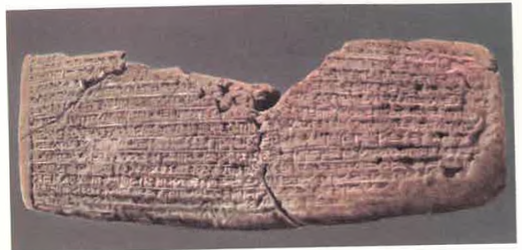
The page has other images and captions:
King Cyrus of Persia proved to be a benevolent conqueror after defeating the Babylonians in 538 B.C. He refrained from slaughtering or enslaving his foes, and issued a proclamation allowing the exiles from Judah and other countries to return to their homelands. A similar decree of Cyrus, shown at the top of this page, was found at Babylon. In it, Cyrus tells of rebuilding the temples of his vanquished enemies and restoring the people to their dwelling places. After Cyrus’ decree the exiled Jews organized their return to Judah. Those who chose to stay in Babylonia aided those who returned with “the freewill offering for the house of God” (Ezra 1:4), which must have included silver vessels much like the Persian bowl [left], excavated in Palestine. . . . .
I am sure I am not alone in having wished that the cited Cyrus Cylinder really did say what the Biblical verse placed adjacent to it said. There was always a slight discomfort over the fact that it was limited, exclusively, to a restoration in Babylon.
An ancient history textbook widely used right through to the mid 1960s introduced students to Cyrus thus:
[The author of the Psalm 137] greeted the sudden rise of Cyrus the Persian with joy. All kings, he taught, were but instruments in the hands of Yahveh, who through the Persians would overthrow the Chaldeans and return the Hebrews to their land. . . .
When the victorious Persian king Cyrus entered Babylon, the Hebrew exiles there greeted him as their deliverer. His triumph gave the Hebrews a Persian ruler. With great humanity the Persian kings allowed the exiles to return to their native land. Some had prospered in Babylonia and did not care to return, but at different times enough of them went back to Jerusalem to rebuild the city on a very modest scale and to restore the temple. (Breasted 233)
Undergraduates in the later 1960s who used the Scramuzza and MacKendrick text read the following:
Characteristically and sensationally, Cyrus liberated the men and gods who had been war prisoners. He sent most of them back home, including some of the Jews . . . . (110)
The myth has known no bounds….
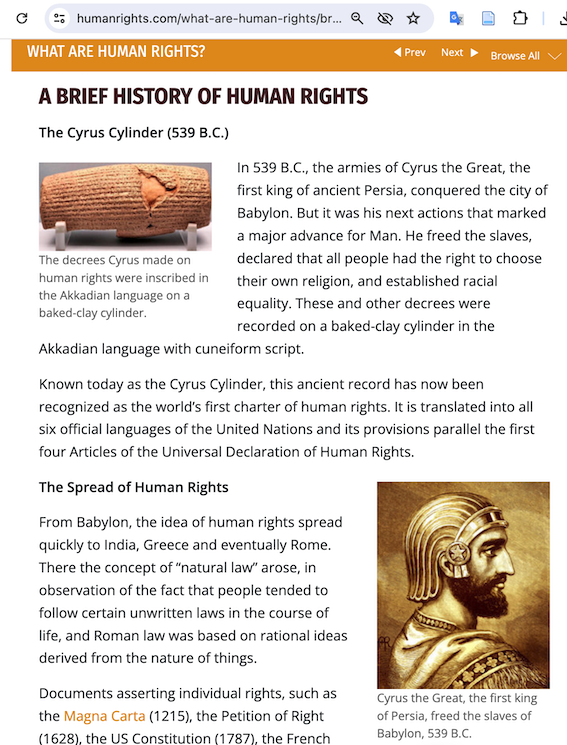
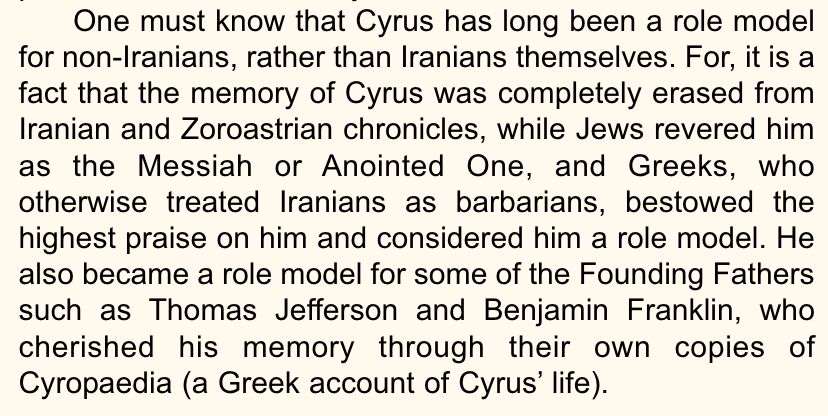

Was there a Mass Return of Judeans from Babylonian exile?
If the concept of a mass return from Exile were correct, then
(1) hints of it should be present in official Persian documents;
(2) traces of it should be observable in the archaeological record of Persian-Period Yehud; and
(3) a dramatic demographic decrease of Judeans in Mesopotamia should be traceable.
(Becking 7)
1 Persian Documents regarding a Return from Exile
If the mass return from Exile was a historical fact, then one might expect traces of it in official documents from Mesopotamia or Persia. The Cyrus cylinder has been interpreted as showing a liberal policy of respect toward other religions — as showing that Cyrus’s policy toward the descendants of the Judean exiles was not unique but fitted the pattern of his rule (e.g., Bickerman 1946; Ackroyd 1968: 140-41; Weinberg 1992: 40; Young 1992: 1231-32). Amelia Kuhrt, however, has made clear that the inscription is of a propagandistic and stereotypical nature (Kuhrt 1983).
You can read the linked references online but the Kuhrt article is not so easy to access so I quote here the relevant extracts:
As a result of the Cyrus Cylinder, the Old Testament traditions and his virtuous monotheism, Cyrus has been hailed as one of the world’s greatest liberators and humanitarians (84)
How correct is it to interpret and use the Cyrus Cylinder in this manner, and what may one really deduce from it about Achaemenid imperial policy? (85)
Kuhrt summarizes the contents of the cylinder — the numbers indicate the lines of text (85f):
1-3: fragmentary, but probably containing a reference to Cyrus’ predecessor (Nabonidus) as a person unfit to rule Babylonia.
4-8: A narrative of the wicked deeds of Nabonidus particularly . . . his blasphemous offerings, his interruption of regular offerings, his lack of awe for [the god] Marduk. In addition he caused the people to perish by imposing heavy labour-duties.
9-10: Marduk raged as he heard the laments of his people; (cult centres were abandoned?) . . .
10-14: Marduk’s anger turns to mercy in the face of his people’s suffering, he examines all the countries to find a just and suitable ruler. He takes hold of Cyrus . . . calls him to his position and appoints him to rule . . . Marduk causes Cyrus to triumph . . . .
15-19: Marduk now orders Cyrus to go to Babylon and accompanies him and his troops like a friend; he causes him to enter Babylon without a battle and hands Nabonidus over to him. All the inhabitants of Babylon are delighted, welcome Cyrus as king and praise Marduk for their deliverance.
[The text now continues in the first person.]
20-22: “I, Cyrus . . . eternal seed of royalty, whose kingship is loved by Marduk and Nabu, who desired his kingship in order to please their hearts.” [The text now enumerates Cyrus’ benevolent activities in Babylon on his arrival-still in the first person.]
22-24: Cyrus’ peaceful and joyful arrival in Babylon and his daily honouring of Marduk.
24-26: Cyrus guarantees the peace of the country and protects the welfare of Babylon and its cult centres; he releases them from their burden [forced labour] . . .
26-30: Marduk is pleased and blesses Cyrus, his son, Cambyses, and all his troops. At Marduk’s command all enthroned kings of all regions bring tribute and kiss Cyrus’ feet in Babylon.
30-34: All the gods whose dwelling-places have been abandoned ’long ago’ are returned to their places and allowed to settle in an eternal dwelling (the cult-centres listed in this section are: (Nineveh?), Assur, Susa, Akkad, Ešnunna, Zamban, Meturnu, Der as far as Gutium, cult-centres on the other side (i.e. east) of the Tigris). All the people associated with these returned deities are gathered together and brought back to their (i.e. the restored gods’) dwelling-places. All the gods of Babylonia that had been gathered by Nabonidus together in Babylon were also joyfully returned to their homes at the command of Marduk.
34-36: A prayer asking that all the restored gods may daily speak to Marduk and Nabu on behalf of Cyrus and Cambyses, his son.
36: All lands are at peace.
37-8: (Probably) a reference to increased cult-offerings.
38-43: Improvements and completion of building in Babylon (walls, quay-wall, elaborate doors).
43-45: Cyrus finds an inscription of Assurbanipal, ’a king who preceded me’ . . . .
Commentary:
First, the text is related specifically to [the Babylonian god] Marduk . . . .
Secondly, the text concerns almost exclusively the well-being of the city of Babylon and its inhabitants . . . .
Thirdly, nowhere in the text are there any remarks concerning a general return or releasing of deportees or exiled communities . . . .
The fourth point to note is the fact that the physical shape and literary genre of the Cyrus Cylinder is that of a typical Mesopotamian building text, a type of royal inscription already about two thousand years old at the time of Cyrus’ conquest. . . . Such inscriptions is that they were generally placed as foundation deposits underneath or in the walls of buildings the construction or restoration of which they served to commemorate. (87f — bolded highlighting is mine in all quotations)
It is significant that the last line of the Cyrus Cylinder refers to an Assyrian king who preceded Cyrus. Another cylinder of that same king, very like the Cyrus one, has been found:
The final point I would draw attention to is the new fragment describing the finding of an inscription of Assurbanipal, the Assyrian king (669-c.630 BC); this was probably a foundation-text of similar type to that represented by the Cyrus Cylinder. A fact that should be especially noted is that Assurbanipal is called ’a king who preceded me’ and it is fair to assume that the concluding line of the Cyrus Cylinder referred to the replacing of Assurbanipal’s text where it had been found and the placing of Cyrus’ inscription next to it. This actually provides a clue to the ultimate purpose of the Cyrus Cylinder: it was composed to commemorate his restoration of Babylon like that of his predecessor Assurbanipal, recount his accession and pious acts and demonstrate to subsequent generations his legitimacy as ruler of Babylon. (88)
The cylinder refers specifically to the Babylonian god Marduk and the building of that god’s temple and was to be deposited with the foundations of that temple — just as similar foundation cylinders were produced by other kings for specific temple constructions. Such cylinders in no way shed light on the personal religious convictions of the king authorizing them (Kuhrt 89).
The inscription refers explicitly to the previous king of Babylon who had degraded Marduk’s temple in order to foster the temple of another god in another city. The Cyrus cylinder is limited to making amends for that particular wrong and releasing people from working on the rival temple to Marduk so that they could return to rebuilding Marduk’s temple.
Cyrus is following the example set by an Assyrian king who had rebuilt the same temple in Babylon. The type of cylinder and language used (e.g. “gatherer of the dispersed people”) had a long history in Mesopotamia going back to Hammurabi. Another Assyrian king, Esarhaddon, composed a very similar text describing his reconstruction of Babylon and the restoration of its Marduk cult after his father had destroyed both. His successor, Assurbanipal, actually carried out the restoration planned by Esarhaddon. The Cyrus cylinder is based on the Assyrian model:
The acknowledgement of Assurbanipal as a worthy and respected predecessor of Cyrus is now attested by the new Yale fragment, which confirms [the] earlier conclusion that for the Marduk priesthood (and indeed, in my opinion, for the citizens of Babylon) Assurbanipal was a revered restorer and protector of traditional privilege and this is the image that Cyrus, too, adopted so successfully. For this reason the Cyrus Cylinder was composed, using as models Assurbanipal’s rebuilding texts; Cyrus could thus be presented not as a foreign and barbarian invader but as a restorer of what was right in the tradition of an earlier, venerated predecessor. (92)
Kuhrt sums up:
(a) The Cyrus Cylinder is a document composed in accordance with traditional Mesopotamian royal building texts . . . .
(b) It is thus unsurprising that the text relates itself exclusively to the fortunes of the city of Babylon and its god Marduk and only by extension to other deities of the Babylonian pantheon and the country of which Babylon was the capital.
(c) The fact that the text has a limited local application is confirmed by the geographical horizons outlined above and the possibility that similar (albeit perhaps not such elaborate) compositions were produced in relation to the restoration of other sanctuaries.
(d) The main significance of the text lies in the insight it provides into the mechanism used by Cyrus to legitimise his conquest of Babylonia by manipulating local traditions . . . .
(e) Whether Cyrus ever actually ’restored’ any cults is quite unclear . . . . But such a restoration does not appear to have been carried out; the emphasis in the relevant passages of the cylinder is not on any actual restoration of cults but on the re-establishment of a normal, i.e. correct, state of affairs — a literary device used to underline the piety of Cyrus as opposed to the blasphemy of Nabonidus. (92f)
In other words, and Amélie Kuhrt makes this point explicitly, the Cyrus cylinder sheds no light whatsoever on the supposed rebuilding of the Jerusalem temple or return of Judean exiles.
As for the reputed humanitarianism of Cyrus, Kuhrt makes the following points:
(a) [Cyrus] and his successors were doing no more than following Assyrian policy in relation to the Babylonian cities — a policy which could be reversed when necessary; note the destruction of Babylon and possible removal/destruction of the Marduk statue by Xerxes after revolts in Babylonia in the early part of his reign.
(b) Cambyses ’the tyrant’ also restored cultic order in the temple of Neith in Sais [= in Egypt] and yet certainly withdrew incomes and privileges from other temples in Egypt in order to break the power of the priesthoods.
(c) While Achaemenid [= Persian] rulers appear to have been anxious to maintain the privileges of cultic communities as evidenced, for example, by the letter from Darius to Gadates concerning the workers in the sacred grove of Apollo, yet the temple at Didyma in Asia Minor was destroyed on the orders of the same king probably because of the role it had played in the Ionian revolt (Hdt. 6.20).
(d) The Achaemenids [= Persians] certainly practised the deportation of populations as part of their policy just as Assyrians and Babylonians had done; thus, the inhabitants of Barca in Libya were moved to Bactria by Darius I (Hdt. 4.204), the Paeonians were moved from Thrace to Phrygia (Hdt. 5.13-16), and the inhabitants of Miletus were settled on the Persian Gulf (Hdt. 6.20). A much later reference in a Babylonian text dating to Artaxerxes III lists deportees, including women, arriving in Babylon after the revolt of Sidon.
The assumption that Persian imperial control was somehow more tolerable than the Assyrian yoke is based, on the one hand, on the limited experience of one influential group of a very small community which happened to benefit by Persian policy and, on the other, on a piece of blatant propaganda successfully modelled on similar texts devised to extol a representative and practitioner of the earlier and much condemned Assyrian imperialism. (94f)
So much for the evidence of the Persian documents relating to a restoration of Judeans from Babylonian exile. But we like our myths.
Were the Judeans exiled to Babylon pining to return?In regard to the subsequent history of those who were deported, there can be no question ; like the members of every other deportation, they settled down promptly and permanently in their new surroundings, engaging in every sort of lucrative occupation which was within their reach, and adopting unreservedly for themselves and their posterity the country into which they had been transplanted. . . .
According to the 137th Psalm, which plainly draws a favorite picture, the sons and daughters of Zion were held by their captors in an unhappy confinement in the strange land, like beasts in a cage.
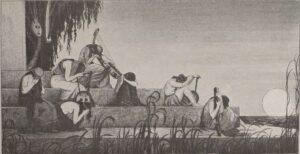
They sat by the rivers of Babylon and wept, while their harps hung silent on the neighboring willows. A well-known writer on Old Testament subjects has remarked in a recently published volume, that in “the leisure of the exile” the Jews were able to work out problems for which they would have had no time in the busy life in Palestine. The leisure of the exile! The use of this marvellous phrase is of itself sufficient to show how far removed even the modern current theory of these events is from any historical possibility. (Torrey 290)
2 Archaeological Traces in Yehud
From my previous post you will know the answer to this question. The archaeological evidence is clear that there was a significant drop in population in what had been the kingdom of Judah (especially in the central and southern regions). The same post further notes that despite this population loss there was “a clear continuity between Neo-Babylonian and Persian I periods” (Becking 9)
This implies that the land of Judah was not empty during the so-called exilic period and that a considerable part of the population of Yehud in the Persian I period consisted of the descendants of those who remained in the land. (Becking 9)
Later in the Persian period there is evidence of more settlements and a population increase but nothing that would indicate that this was the result of “natural expansion” and growing trade. There is no reason to discount smaller migrations from time to time but certainly no “mass return”.
The general picture that emerges is that of a demographic decrease in the early sixth century B.C.E. followed by a very slow increase during the Persian Period. As Lipschits formulates: “the ‘return to Zion’ did not leave its imprint on the archaeological data, nor is there any demographic testimony of it” (Lipschits 2003: 365). The evidence available cannot be connected to a theory of mass return in the sixth century. It suggests waves of return that lasted throughout the course of a century (Weinberg 1992; Hoglund 1992b; Knauf 1994: 167; Carter 1999; Kinet 2001:190-202).
3 Archaeological evidence in Mesopotamia
Becking’s conclusion after referring to an early draft of a work that has since been published:
A dramatic decrease of the portion of Judeans / Yehudites in the transition from the NeoBabylonian to the Persian Period is not observable in this archive. Although no further historical conclusions can be drawn prior to the publication of this archive, it should be noted that these texts likewise do not support the hypothesis of a mass return from exile. (12)
Conclusion: not one of the three items we would expect to find if there had been a mass return of Judeans to Judah/Yehud in the Persian era has been found. And the idea that Cyrus was any more humane or benevolent than his Assyrian predecessors is a myth. If Assyrians are infamous for their cruelty there is may be less to distinguish them in that regard from their Persian successors than the popular myth would have us believe.
Becking, Bob. “‘We All Returned as One!’: Critical Notes on the Myth of the Mass Return.” In Judah and the Judeans in the Persian Period, edited by Oded Lipschits and Manfred Oeming, 3–18. Winona Lake, Ind: Eisenbrauns, 2006.
Breasted, James Henry. Ancient Times, a History of the Early World. 2nd ed. Boston: Ginn, 1944. https://archive.org/details/ancienttimeshist00brea.
Kuhrt, Amélie. “The Cyrus Cylinder and Achaemenid Imperial Policy.” Journal for the Study of the Old Testament 8, no. 25 (February 1, 1983): 83–97. https://doi.org/10.1177/030908928300802507.
Torrey, Charles Cutler. Ezra Studies. Chicago, The University of Chicago Press, 1910. http://archive.org/details/ezrastudies00torr.
Neil Godfrey
Latest posts by Neil Godfrey (see all)
- What Others have Written About Galatians (and Christian Origins) – Rudolf Steck - 2024-07-24 09:24:46 GMT+0000
- What Others have Written About Galatians – Alfred Loisy - 2024-07-17 22:13:19 GMT+0000
- What Others have Written About Galatians – Pierson and Naber - 2024-07-09 05:08:40 GMT+0000
If you enjoyed this post, please consider donating to Vridar. Thanks!


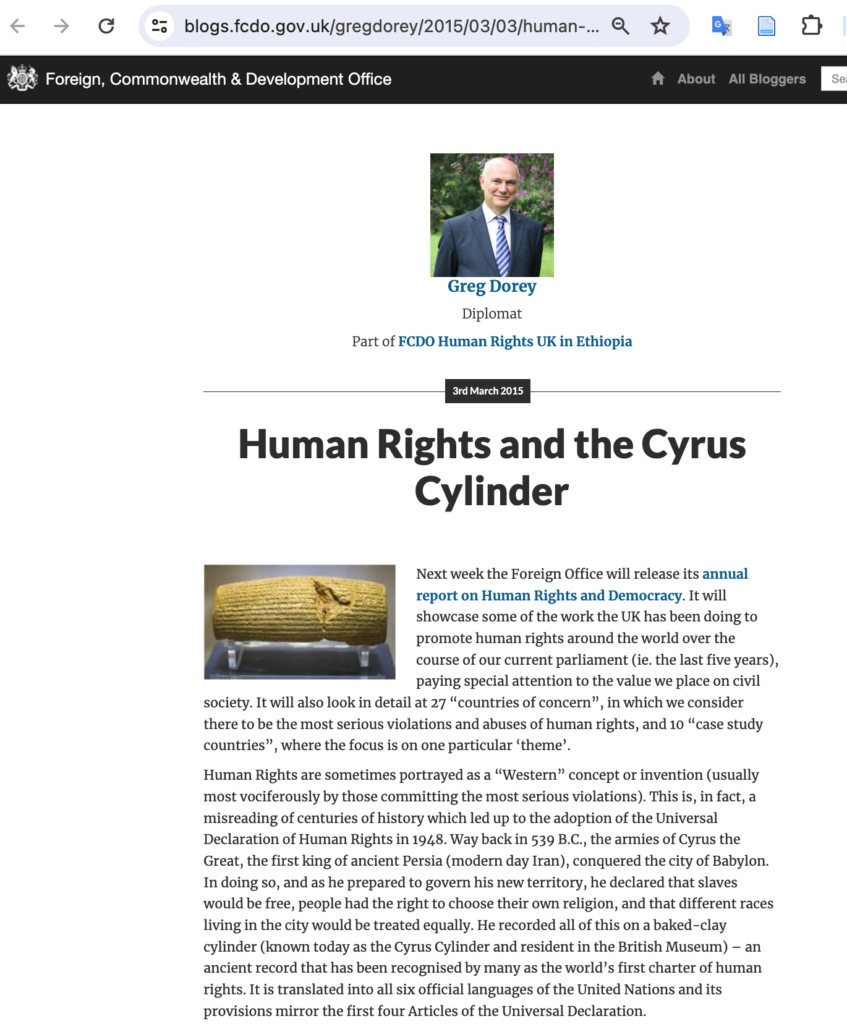
So, like the Cyrus Cylinder itself, 2nd Isaiah and Ezra/Nehemiah are propaganda, not “history” or even historiography. This comports better with Israel Finkelstein’s findings.
I would point out, however, the Persian Empire did have a lot of interest in the Samaritan area, which it chose as their regional headquarters, while they appeared to have ignored and even abandoned Judea and Jerusalem.
Joshua Ben Seri gives the honor of rebuilding the 2nd Temple to Simon, Son or Onais, sometime before he wrote in the 2nd Century BCE, about 10 years before the Hasmoneon revolt.